Weekend Course
30 Years of Functional MRI
ISMRM & SMRT Annual Meeting • 15-20 May 2021

| Concurrent 3 | 15:15 - 16:00 | Moderators: fMRI Basics: Gisela Hagberg Mechanisms of Resting-State fMRI: Patricia Figueiredo & Jorge Jovicich |
| fMRI Basics | ||
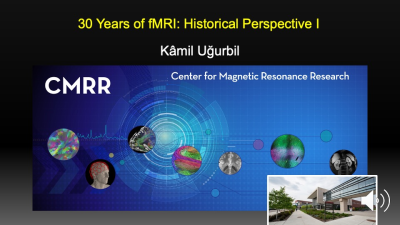 |
30 Years of fMRI: Historical Perspective I
Kamil Ugurbil
The human fMRI experiments performed in CMRR, University of Minnesota, were motivated by the elucidation of the BOLD effect and the plan to establish a 4Tesla human imaging system in CMRR. These were the first experiments carried out on the 4T after it became operational. The effort produced several seminal papers in 1992 and 1993, reporting on successful functional mapping in the human brain, modeling of BOLD effect with implications on micro- versus macro-vascular contributions and the effect of the magnetic field strength, and experimental demonstration of the draining vein confound, leading to the development of 7 Tesla for fMRI.
|
|
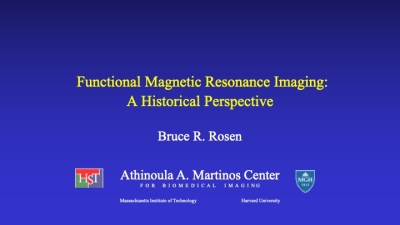 |
30 Years of fMRI: Historical Perspective II
Bruce Rosen
The development of functional Magnetic Resonance Imaging (fMRI) has fundamentally changed our ability to study human brain function – it has become by far the dominant tool used by cognitive and translational neuroscientists to link brain activity with human behavior. This talk will present some of the key antecedent concepts that underlay the development of modern fMRI methodology, and build a narrative of discoveries and insights that led to the emergence of this remarkable tool in the early 1990’s.
|
|
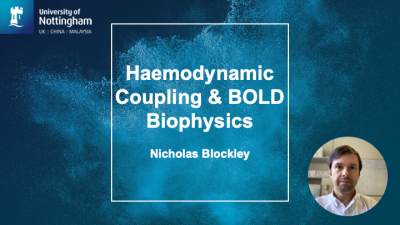 |
Haemodynamic Coupling & BOLD Biophysics
Nicholas Blockley
In this educational talk I will give a broad overview of haemodynamic coupling and BOLD biophysics. I talk about neurovascular coupling mechanisms including feedback versus feedforward mechanisms, vasodilation and vasodilators. From the perspective of the physiology of the BOLD signal I talk about the haemodynamic and metabolic contributions to the BOLD response. I then describe how these physiological changes translate into the measured BOLD signal including the effects of pulse sequence, vessel size and magnetic field strength.
|
|
| fMRI Acquisition Methods
Wietske van der Zwaag
In this presentation, I give a brief overview of the fMRI acquisition methods developed between 1990 and 2020. The history of fMRI acquistions is a colourful one, going from MBEST and spirals to blipped CAIPIRINHA and alternative contrasts in 30 short years.
|
||
| Non-BOLD: Imaging Blood Volume & Perfusion
Emmanuel Barbier, Jan Warnking
The relation between the BOLD signal and brain physiology is complex. Among the physiological determinants of BOLD, the cerebral blood volume (CBV) and the cerebral blood flow (CBF) appear of interest: they may be mapped using MRI. In fact, the first functional MRI paper ever published was based on the mapping of CBV changes, soon followed by a CBF-based fMRI paper. In this course, we will review the main fMRI methods based on blood volume and blood flow.
|
||
| Mechanisms of Resting-State fMRI | ||
| Resting-State fMRI
Bharat Biswal
|
||
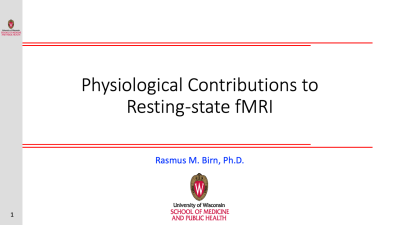 |
Physiological Contributions
Rasmus Birn
Resting-state functional connectivity is sensitive to various sources of noise, particularly head motion and physiological fluctuations resulting from the heart beat and respiration. This noise can cause both false positives and false negatives. A variety of tools have been developed to reduce the influence of this noise. These techniques include image registration, censoring high-motion time points, nuisance regression (where noise is modeled as additional regressors in a general linear model) and data-driven approaches such as independent component analysis (ICA).
|
|
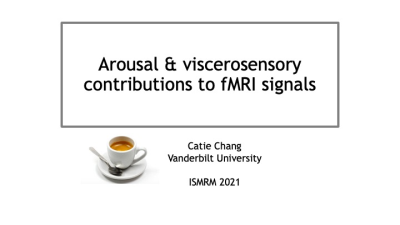 |
Arousal & Viscerosensory Contributions
Catie Chang
This talk discusses how arousal and brain-body interactions shape fMRI signals. We discuss ways in which fMRI signal characteristics and connectivity patterns have been found to change with fluctuations in arousal and during sleep. We also discuss the use of peripheral physiological recordings to study autonomic processing, as well as interactions between visceral signals and fMRI.
|
|
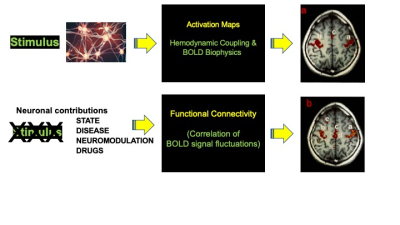 |
resting state fMRI: Neuronal Components
Silvina Horovitz
This lecture explores the neuronal contributions to the BOLD signal fluctuations and fMRI functional connectivity. We then provide an overview on electrophysiological and behavioral changes that alter fMRI functional connectivity. Finally, we discuss the implications in the understanding of resting state studies. |
|
The International Society for Magnetic Resonance in Medicine is accredited by the Accreditation Council for Continuing Medical Education to provide continuing medical education for physicians.